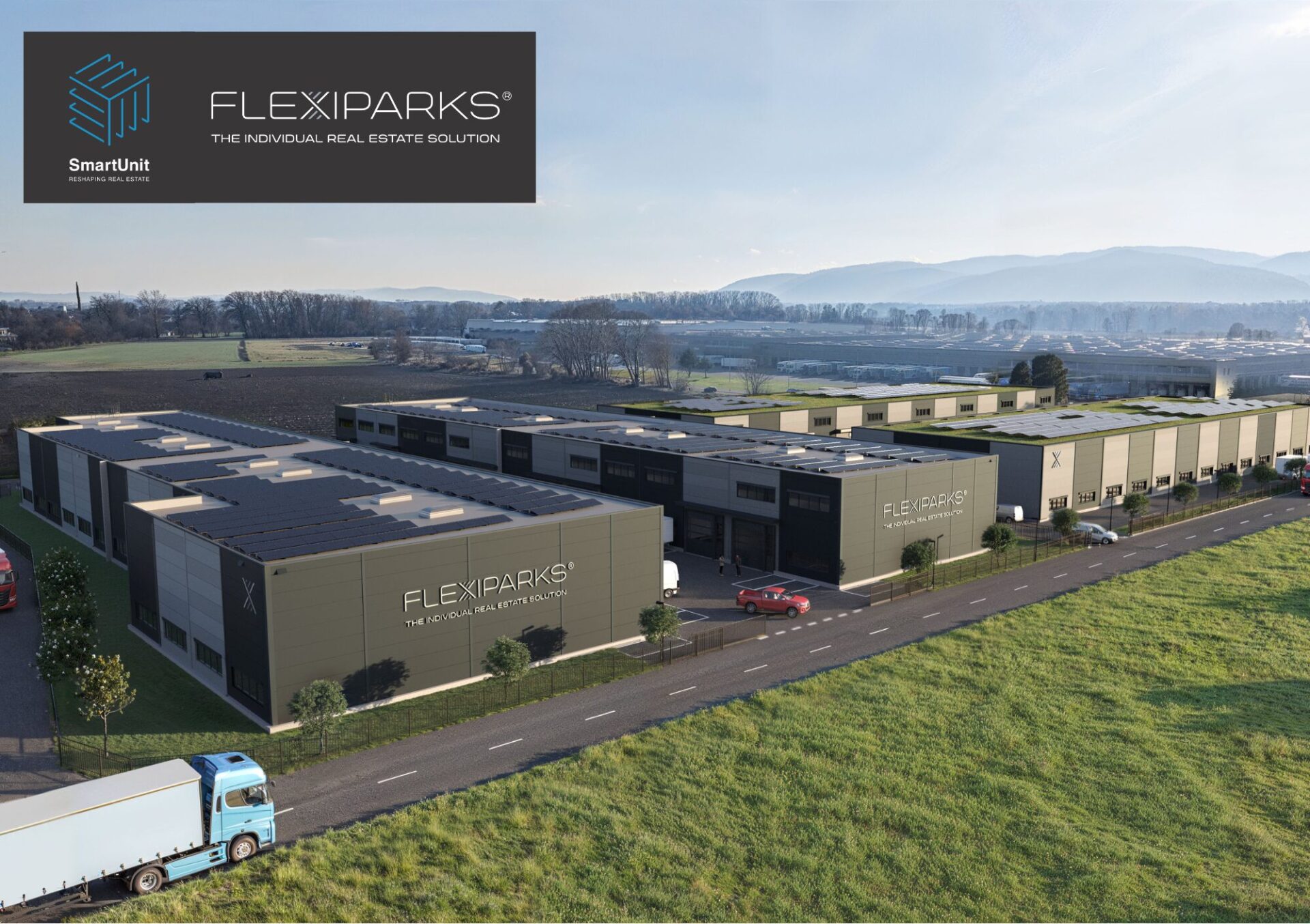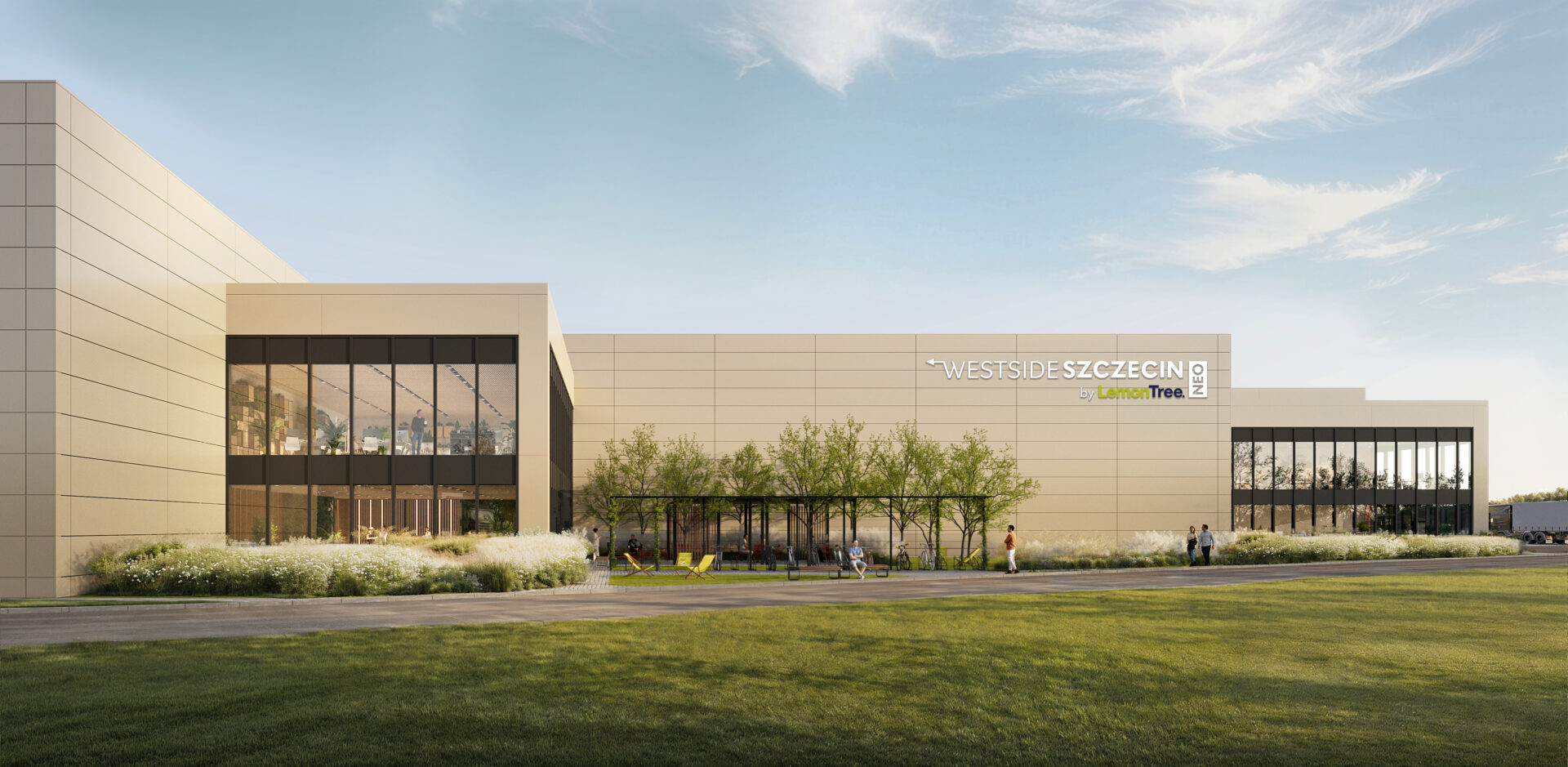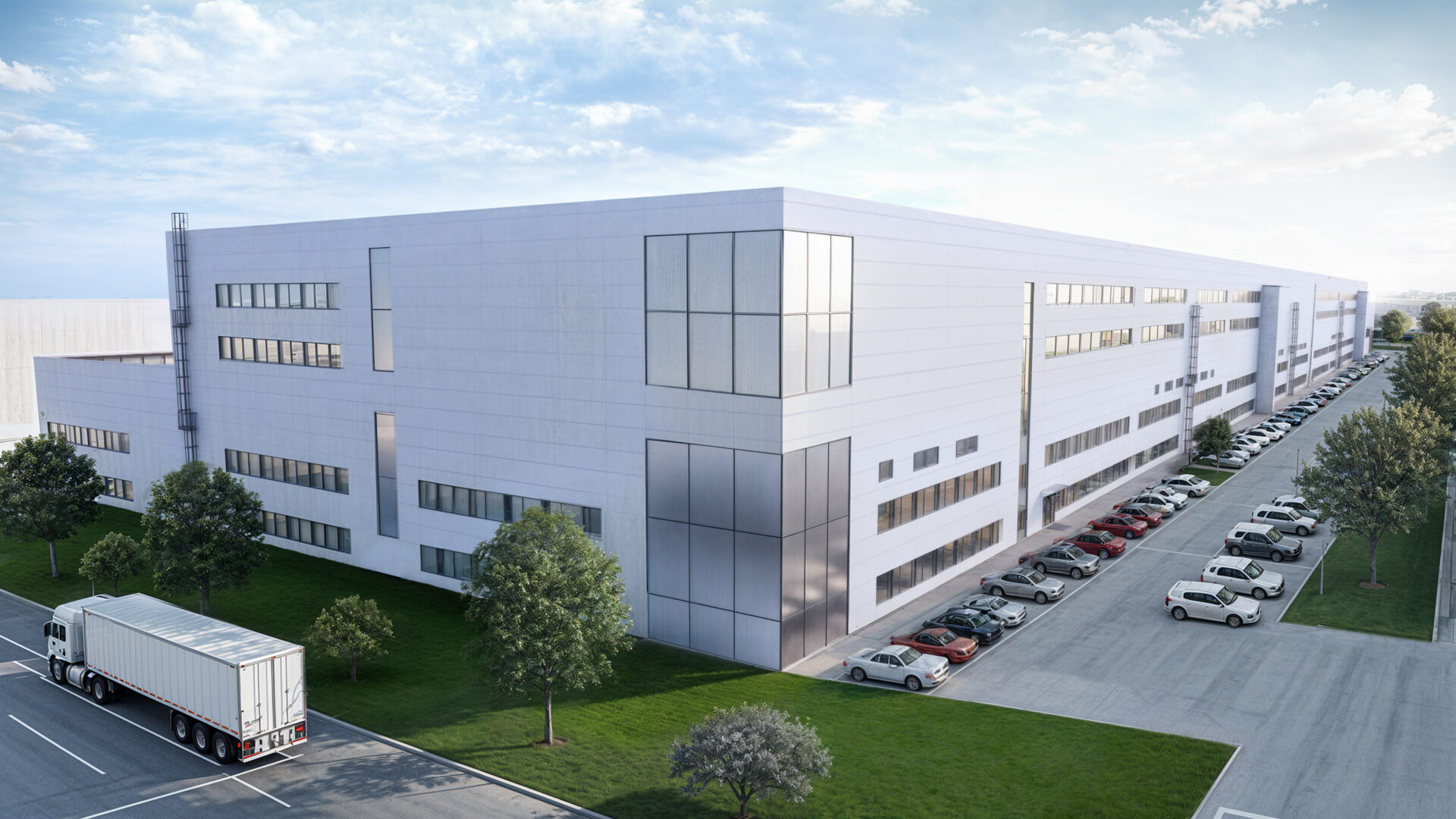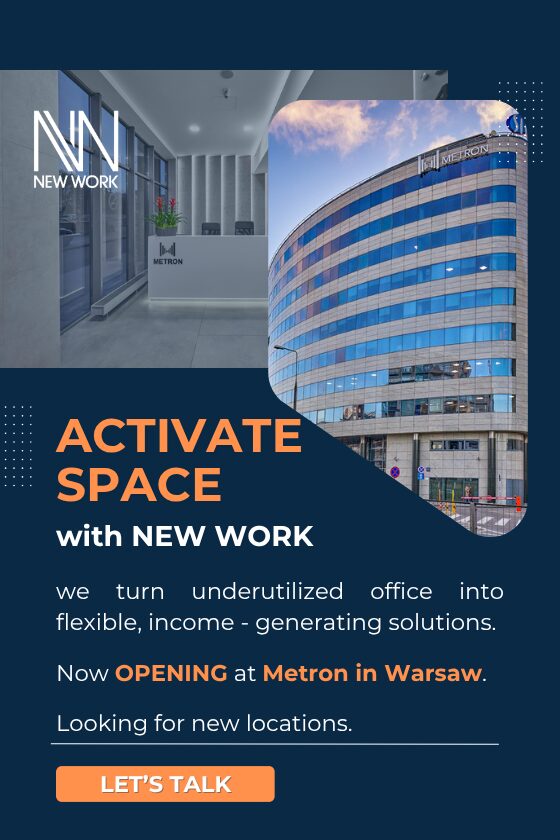The Łódź region offers ideal conditions for companies seeking rapid growth and cost optimization opportunities, while also benefiting from full access to both domestic and European markets. Experts from Newmark Polska, Igepa Polska, Corning Optical Communications, and Langowski Logistics highlight that Central Poland has long been one of the country’s leading logistics hubs. With more than 4.8 million square meters of modern warehouse and industrial space, it ranks third nationwide, just behind Upper Silesia and Warsaw
Strong demand and the lingering effects of the pandemic
The last three quarters have shown that manufacturers, logistics providers and retailers want to lease warehouses in the Łódź province. Demand for warehouse space surged by 72.5 percent year-on-year. Take-up for the first nine months of the year surpassed 636,000 sqm, with the largest leases in the province signed by two retail tenants: 72,000 sqm in the Central European Logistics Hub and 62,000 sqm in Hillwood Łódź II Chocianowice.
“Despite strong leasing activity in recent months, the vacancy rate in Central Poland edged up to 11.2 percent by the end of September 2024. The increase in warehouse availability is largely attributed to decisions made in the early days of the pandemic, when Central Poland recorded robust occupier demand, with many new projects breaking ground, including those developed on a speculative basis. Notably, by the end of 2021, the development pipeline in the Łódź market hit a record high of nearly 850,000 sqm,” explains Jan Olszewski, Advisor, Industrial and Warehouse Department, Newmark Polska.
The expert from Newmark Polska adds that significant volumes of unoccupied space are available in older buildings vacated by tenants. “Older buildings – both Class A buildings over 15 years old and Class B facilities – will over time fall short of occupier requirements or fail to meet EU regulations, particularly those concerning energy performance and overall environmental impact. This is expected to further push up their vacancy rates. In the short term, landlords of these facilities will continue to seek new tenants. However, in the long term, the oldest buildings will need to be either thoroughly refurbished or repurposed, a trend that is already taking place. For example, part of an older warehouse in Łódź has been repurposed into a climbing wall,” says Jan Olszewski from Newmark Polska.
Logistics providers follow their clients
Łódź appears to be an ideal location for a warehouse hub. Situated in the heart of Poland, it lies at the intersection of the A1 and A2 motorways and the S8 expressway.
“This is why Central Poland attracts companies like a magnet. Many are establishing and expanding their central warehouses here, using them as hubs to distribute goods to smaller warehouses across the country or abroad, and ultimately directly to retail stores or online shoppers. Łódź is home to the Central European Logistics Hub (CEL HUB), spanning over 600,000 sqm, making it the largest logistics park in Poland. Its key tenants include Media Expert, Smyk, Poczta Polska, DPD, BSH, and InPost,” says Jakub Dudkiewicz, Senior Associate, Industrial and Warehouse Department, Newmark Polska.
Zdzisław Kocoń, Warehouse Logistics Director, Langowski Logistics, asserts that the Łódź region offers ideal conditions for companies seeking rapid growth and cost optimisation opportunities while benefiting from full access to both domestic and European markets and clients. “Our business partners have established their business headquarters in Łódź and Warsaw, and they expect the warehouse of a logistics service provider to be located nearby. With its proximity to large urban markets and well-developed e-commerce infrastructure, Central Poland serves as an excellent springboard for retailers and distributors. Being situated in the heart of Poland allows them to efficiently serve customers across the country and respond quickly to market demands,” comments the director at Langowski Logistics.
A range of available units
The Łódź warehouse market boasts great diversity. “We have clients from virtually all sectors who enquire about various spaces. Companies require warehouses starting from 3,000 sqm, with larger market players leasing 50,000 sqm and more,” says Jan Olszewski. Łódź attracts and retains tenants. Most companies that establish a foothold in the region remain here for longer. As they grow, they report an increasing demand for logistics space. This was exactly the case for many fashion companies that began their journey in Łódź – these included Tatuum. The Łódź province is a leading hub for international manufacturers, including Corning Optical Communications, a designer and producer of fibreoptic cables and telecommunications equipment, which chose this region for its factories and development centre over 20 years ago.
Commenting on the strengths of Central Poland, Łukasz Srogosz, Plant Manager, Corning Optical Communications in Stryków, notes that Corning Optical Communications continues to grow and implement cutting-edge solutions while benefiting from access to a skilled workforce in the region. “Historically, the Łódź region has been a strong manufacturing hub. With the availability of graduates from the Łódź University of Technology, one of the best technical education institutions in Poland, the region has expanded at pace. Our campus in Stryków currently includes two production plants, a robust R&D division and laboratories, with more than 3,000 staff members, including over 500 engineers, specialists and other office workers. Recently, we have been developing new data centre solutions for AI processes, so we are now focused on recruiting candidates with relevant technical skills,” says Łukasz Srogosz.
More skilled labour
According to Kamil Stróż, Chief Manager of Warehouses at Igepa Polska, another key advantage of Łódź is its favourable investment environment, including tax reliefs and access to EU subsidies and funds. “Central Poland has one of the strongest logistics and warehouse sectors in the country, benefiting from access to highly skilled labour. Although competition for staff is intense, the region offers significantly better hiring opportunities compared to other areas,” says Kamil Stróż, adding that the labour market has evolved significantly since the 2020 pandemic, transitioning from being loose to tight. Meanwhile, Central Poland remains one of the fastest-growing regions in the country for logistics, warehousing and e-commerce, driving demand for skilled workers. “Bonuses offered by companies seeking to hire warehouse employees very often include full training and a course in UDT qualifications for operating forklifts which were previously a mandatory requirement on CVs,” explains Kamil Stróż, Igepa Polska.
Optimise costs in Łódź
Of the largest warehouse markets in Poland, Central Poland offers highly competitive rents. In the third quarter of 2024, the region’s headline rents stood at EUR 3.6–4.5 per sqm.
“Landlords have recently become more willing to negotiate commercial rental conditions, which has resulted in lower effective rents. A similar trend can be seen in most regions with substantial logistics and industrial stock, where relatively high vacancy rates and protracted decision-making are key factors. Warehouse landlords are eager to secure tenants, which drives the need for negotiation,” explains Jakub Dudkiewicz. “Before the outbreak of the war in Ukraine, the disparity between headline and effective rents reached as high as 40 percent. However, from March 2022 onwards, developers became increasingly reluctant to offer incentives, with discounts negotiated at the table dropping to a maximum of 20 percent of the asking rent. Currently, we are witnessing a return to more flexible negotiations, with both parties to a lease agreement demonstrating a greater understanding that although location remains the most critical factor in the property market, price is recognised as a close second,” adds Jakub Dudkiewicz.
Steadily moving forward
Tenants and landlords must reach an agreement, a need that has grown even more pressing as developers delivered 445,000 sqm of new warehouse and industrial space in the Łódź region between January and September 2024, marking a year-on-year increase of over 35 percent.
According to statistics from Newmark Polska, most of the nearly 1.7 million sqm of modern warehouse and industrial space completed since 2020 has been built by Panattoni (over 38 percent of the total), Hillwood (almost 36 percent) and 7R (nearly 12 percent). “The Łódź province has attracted virtually all major industrial developers, including CTP, GLP, Logicor, Loogic, Mapletree, MDC2, MLP, P3, Prologis, Reino, and Segro. However, the warehouse and industrial development pipeline has recently contracted. At the end of September this year, only 238,000 sqm was under construction in projects led by Panattoni (nearly 45 percent of the pipeline), P3, Prologis, and MLP. While developers are prepared to launch new projects, many have put their decisions on hold to better assess market conditions, occupancy and vacancy rates,” says Jan Olszewski.
Jakub Dudkiewicz asserts that Central Poland will continue to be targeted by developers. “This is best evidenced by the large number of plots already secured for warehouse and industrial developments. The region’s logistics market could receive a boost from the much-anticipated Central Transport Hub (CPK). A project of this scale, serving as a global cargo hub, would clearly drive demand for warehouse space and further strengthen the position of Central Poland not only within Poland but also across Central and Eastern Europe,” concludes the expert from Newmark Polska.







